27 October 2022
Axel and Sophie's Visit to Yorwaste's Harewood Whin Waste Transfer Facility - 2022
Axel and Sophie visited the recycling and general waste sorting site at Harewood Whin for Steenbergs' mapping of its recycling and waste. It was great to see how the raw recyclate was sorted into corrugated, metals, plastics, and compost.
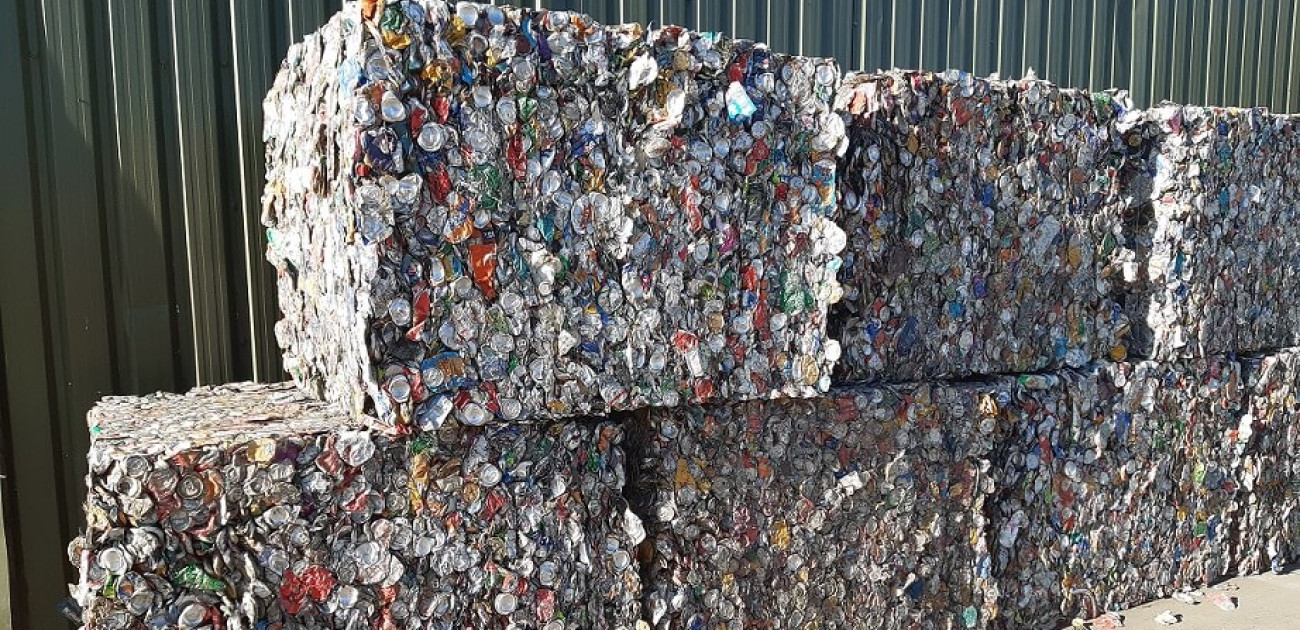
On a sunny Tuesday in October, Sophie and I went to Yorwaste’s Harewood Whin Waste Transfer Station, just outside of Rufforth. We were looked after by Jack and Wayne, who took us on a tour of the site. This was a really good and interesting tour, and they had a deep knowledge of what was happening and where the recyclate was going – this was excellent for us as we really are trying to dig into the detail.
All the recycling and trade waste for Steenbergs is processed through the Harewood Whin Waste Transfer Station, as is all our kerbside recycling from home (Boroughbridge) and stuff we take to our local tip (Ripon). Our black bin bags from home go direct to the waste-for-energy site at Allerton.
The message that came through was that the system is genuinely there and that, certainly in North Yorkshire, almost all waste is being diverted from landfill and Yorwaste is doing their level best to sort and send its materials to proper, authenticated end users. We did believe Wayne, who is in charge of contracts for the commodities, and he seemed truly invested in what he was doing – he’s been doing this for around 20 years, and we didn’t know it, but we rely on his diligence locally to ensure that everything is the best it can be.
It is a 200-acre site in total, most of which is the capped off landfill for York; our domestic landfill site was at Allerton. Both of these stopped in 2018 when the Allerton Waste Recovery Park was opened – so, almost all of our business or domestic waste is kept away from landfill. Methane is captured and used to generate electricity that means the site is a net exporter of energy into the local grid.
There is always a small amount of hazardous waste that must safely be put into landfill, or when the Allerton Waste Recovery Park is on shutdown. But it really is limited. Steenbergs has not sent any trade waste to landfill since 2010, but before Allerton Waste Recovery Park was opened this went to the Netherlands, so this is much, much better.
Harewood Whin gets somewhere between 100 and 130 waste wagons unloading and loading every day at peak, and sorts about 32,000 tonnes of recycled materials and 70,000 tonnes of black bin waste a year, cutting landfill use to a minimum. It is one of a network of sites across North Yorkshire.
If we start with the garden waste, which for us is a domestic material. This is collected fortnightly until November sometime.
Wagons come in via the weighbridge and tip the fresh waste beside the first windrow. It is shredded and turned regularly with diggers, moving sequentially through stages of decomposition as the windrows are turned and moved. The turning gets air (oxygen) into the organic matter, enabling some aerobic decomposition of the plant material, and the internal temperature reaches over 70C. After about 12 weeks, the compost is processed through a line that sorts out the oversized elements from the finer material. The oversized compost goes back through the whole composting process again, while the finer product is of a high enough quality to be sold as compost for agriculture and horticulture. It is, also, bagged and sold for household gardens as a peat free compost.
The end compost has a sweet smell, has a small particle size, but you can still feel the warmth if you put your hand into the compost heap about a foot down. It is this heat (over 70C) that kills off seeds and the harmful bacteria, such as E. coli and Salmonella, so making it safe for use. The composting facility handles about 30,000 tonnes a year, peaking in the summer months, then tailing off in autumn until spring. 2022, though, has been a poor year for garden waste, because of the hot, dry growing season.
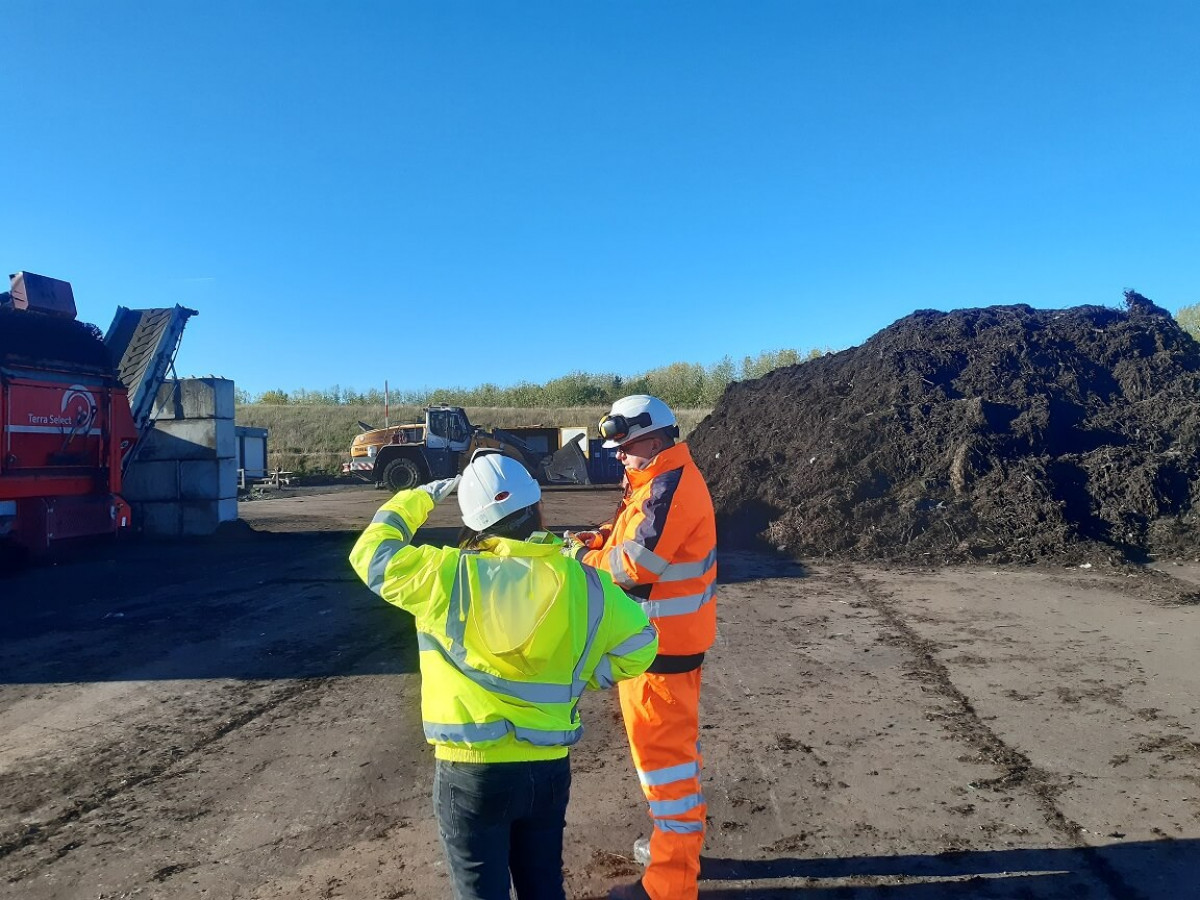
To start the dry waste and recycling sorting process, it is simplest to begin with the black bin bag waste from home (and other parts of North Yorkshire, from Selby via York through Harrogate to Ripon) and Steenbergs’ commercial trade waste. We have a couple of bags at home each week – way down from what it used to be – and one wheelie bin at Steenbergs. Our household black bin bags go direct to Allerton Waste Recovery Park. Our business’s trade waste, and most of the household black bin bag waste, comes into Harewood Whin then is shifted with a digger into a wagon for delivery from Rufforth a few miles away to Allerton Park. About 70% overall of the waste going through Harewood Whin and 75% for Harrogate (our council) goes for energy recovery; this excludes the garden waste that is composted.
Sophie and I visited the Allerton Waste Recovery Park site a few weeks’ earlier, but logically this is best explained in a follow up blog. Basically, the recycling element of local waste is sorted at Harewood Whin, baled, and then shipped out for specialist processing, while the lower quality rubbish is mechanically processed at Allerton Park to recover whatever low grade recyclate it can get out, with the remainder burned for energy recovery – that’s one up from the bottom of the waste hierarchy with the no-no of landfill at the bottom.
The sorted recycled material comes in on waste wagons from the local area – Harrogate, Ripon, York, Selby – and the relevant types are tipped into their respective bunkers.
So, corrugated and paper that has been presorted either at home or baled by businesses, for example, is baled ready for reprocessing at fibre mills, e.g. Prudhoe Mill for toilet paper (that’s the old Kimberley Clark site at Prudhoe for Andrex, etc.; I think it has changed its name to some nondescript brand that no one knows, but I will look next time I visit my mum).
Mixed recyclate goes to a different processor, based in the UK, which sorts out the paper from the plastics. Mixed recyclate is corrugated and plastic mixed together, which comes in from some councils and is what we send in from work (because our waste is not big enough economically to be segregated out). The main contaminants to the cardboard are food (i.e., pizza boxes), Tetrapak mixed material cartons, plastic, but also some glass gets in and that is a real problem for corrugated manufacturers. Yorwaste is permitted a 2% contaminant level in their corrugated recyclate and it is regularly checked by their purchasers – bales opened and hand-sorted to audit the level of contamination.
Harewood Whin processes roughly 10,880 tonnes of corrugated recyclate a year. Most is processed into new paper in the UK, and a small portion goes overseas. There is a logic to sending some corrugated overseas - the UK is a net importer of goods and these need packaging, so to close the loop some of this should go back to source for recycling and then putting through the consumption cycle again.
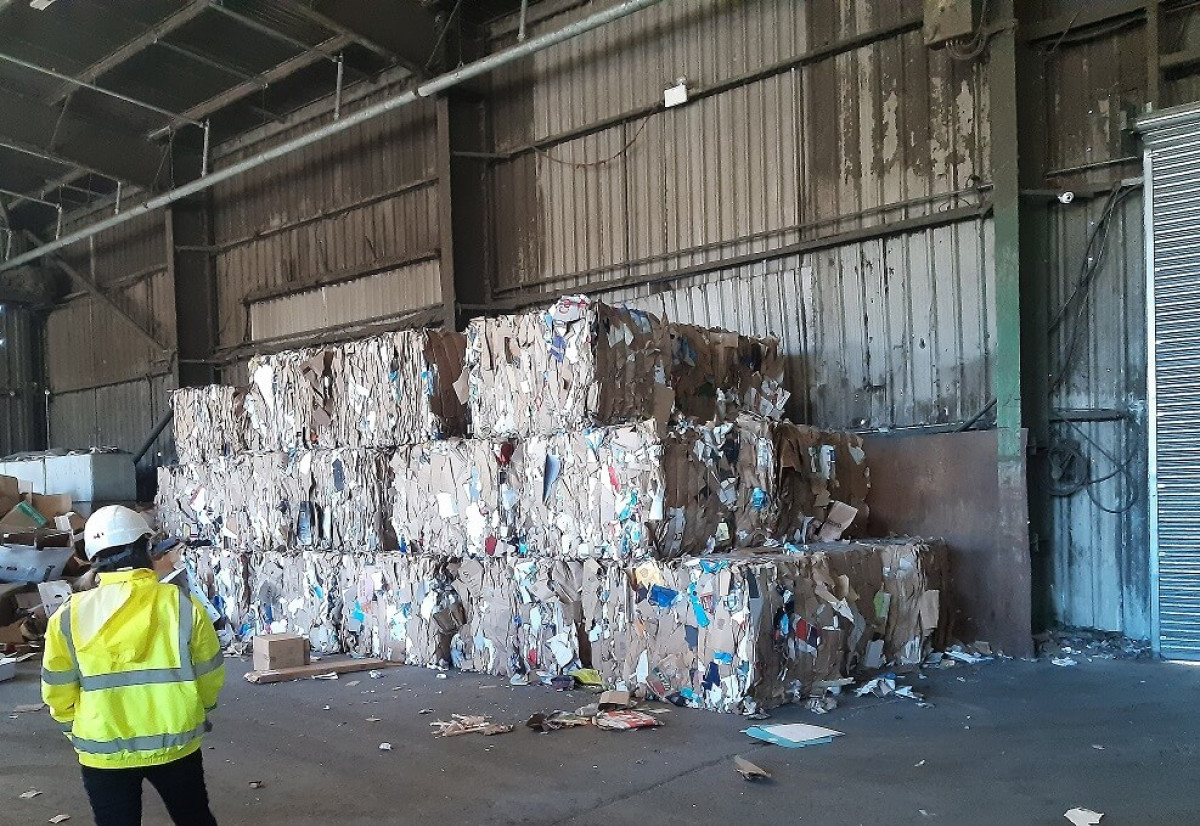
Now, to the trickier glass, metals and plastic recyclate. Locally, we put glass, metal and plastic together in one box. At Steenbergs, plastic (except blue food containers from orange flower water and tamarind) goes into the mixed recyclate; we do not have glass and metal recycling at work. So, this process is only relevant for our domestic recycling in Boroughbridge.
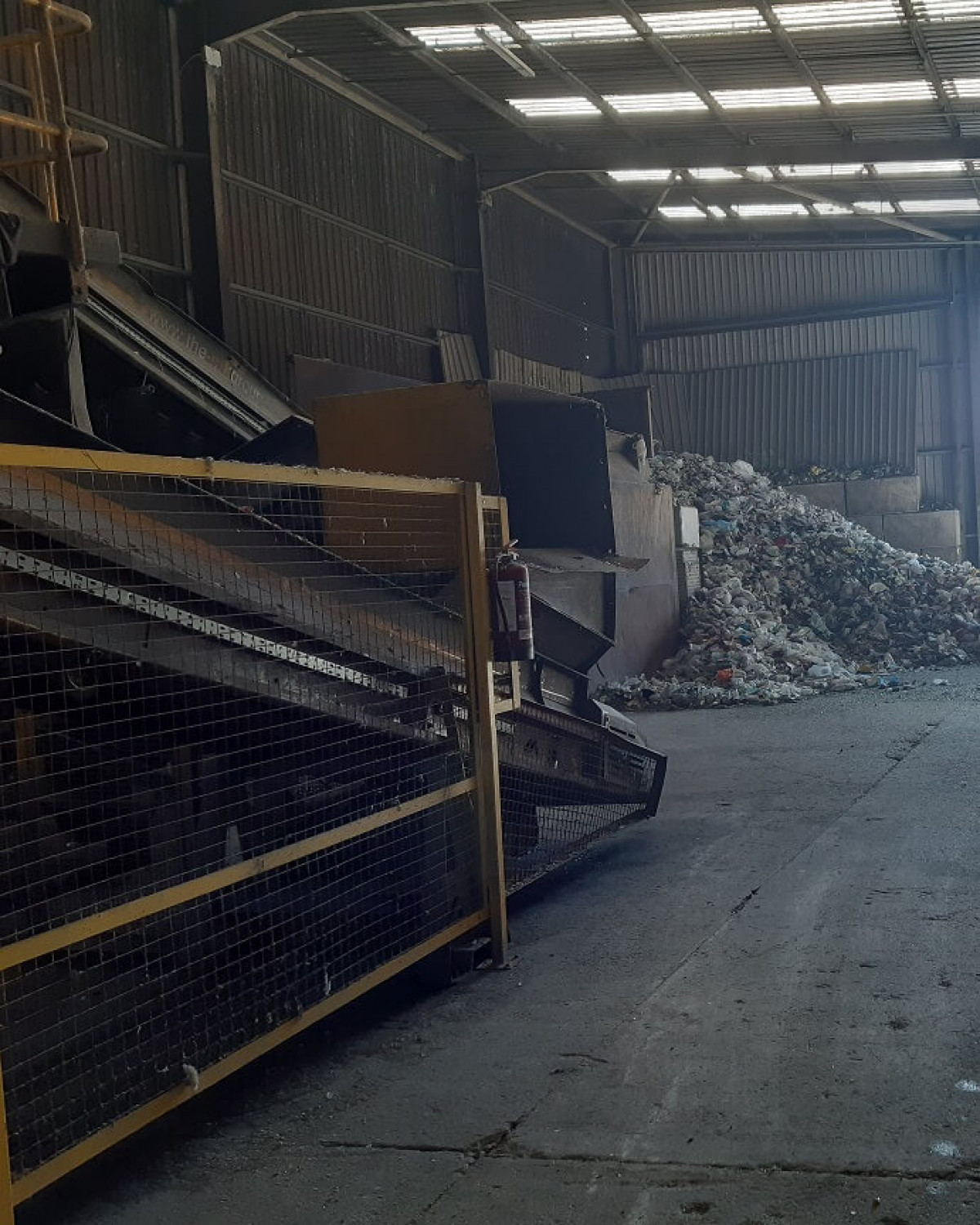
The glass-metal-plastic presorted material is tipped by recycling wagons and then loaded into a sorting machine that goes as follows:
- A trommel with internal heavy metal rods spins to allow smaller material to fall through small holes in its drum while the metal rods smash the glass into small pieces. A trommel is rotating perforated cylinder that turns to allow small material to fall through its holes mechanically to separate solid materials.
- The broken material runs over a strong magnet to remove magnetic steel and iron – bottle tops, jar lids and apparently kitchen knives.
- Hand sorting is now done as the material, which should be mainly softer plastics (milk and pop bottles) and aluminium cans, passes along a conveyor and operatives pick out material that should not be in there.
- Aluminium is separated next through two eddy currents that push out the aluminium cans. This still will contain less good materials such as aerosol canisters but is of a decent quality.
- The end material should now be a good, high-grade softer plastic (PP and PET) which is compressed and baled.
The baled raw recyclate is then shipped off to a recycling processor to be cleaned further, for example the crushed glass will be optically sorted into different coloured glass before the cullet is sent to glass manufacturers, and the plastics are sorted into different types of material and colours, then pelletised in South Wales before it can be put back into the plastics manufacturing system.
Harweood Whin processes about 21,150 tonnes of raw mixed recyclate a year, of which 9% is steel, 3% is aluminium, 62% glass and 26% plastic. All of this is processed into glass cullet and plastics pellets in the UK.
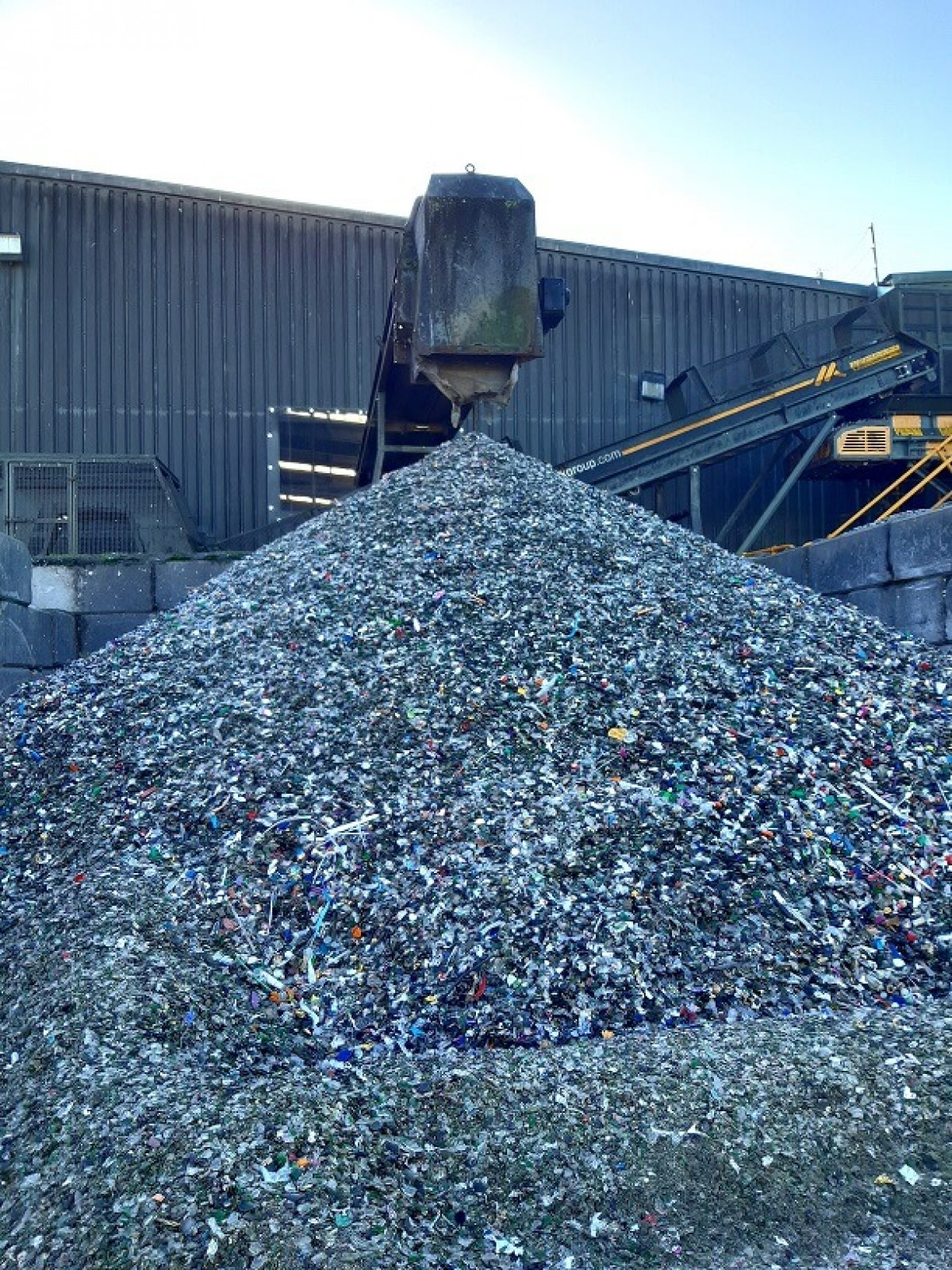
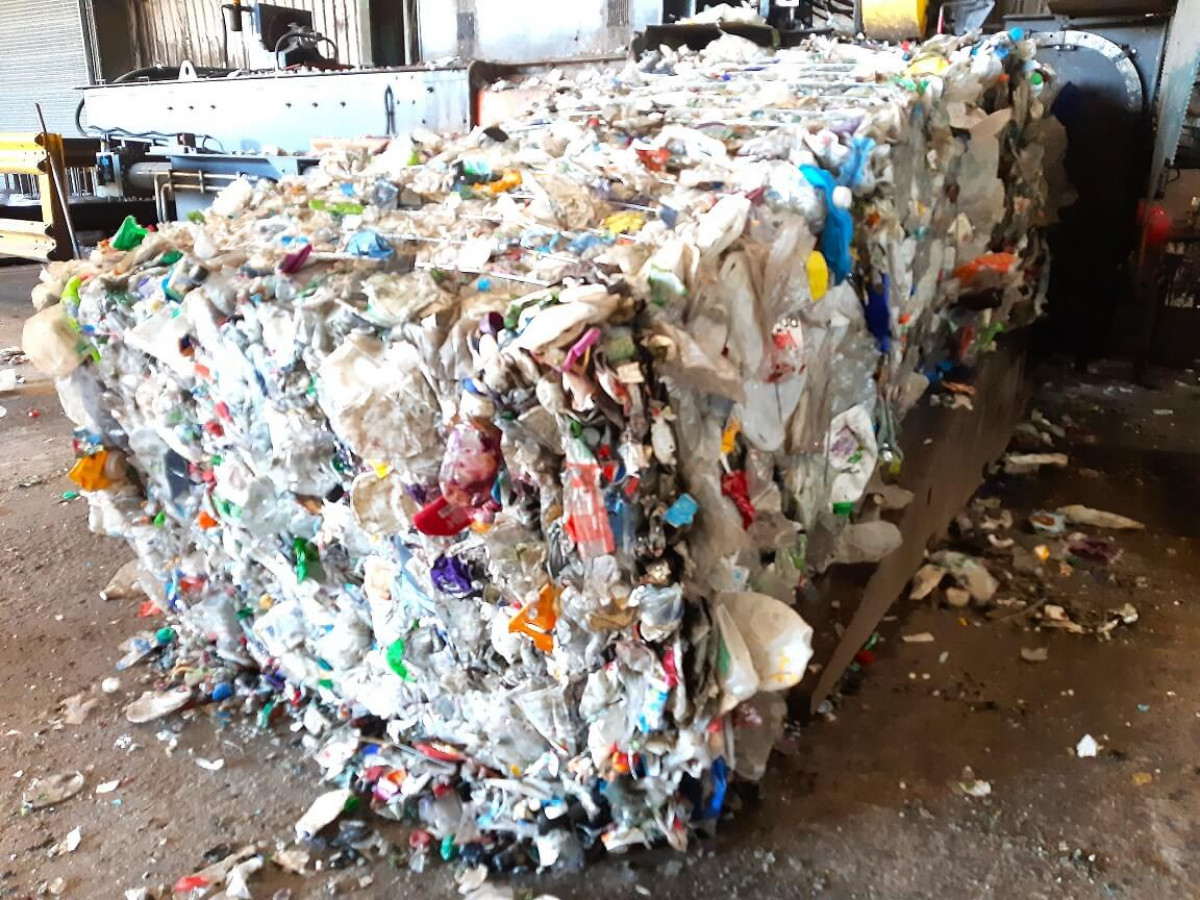
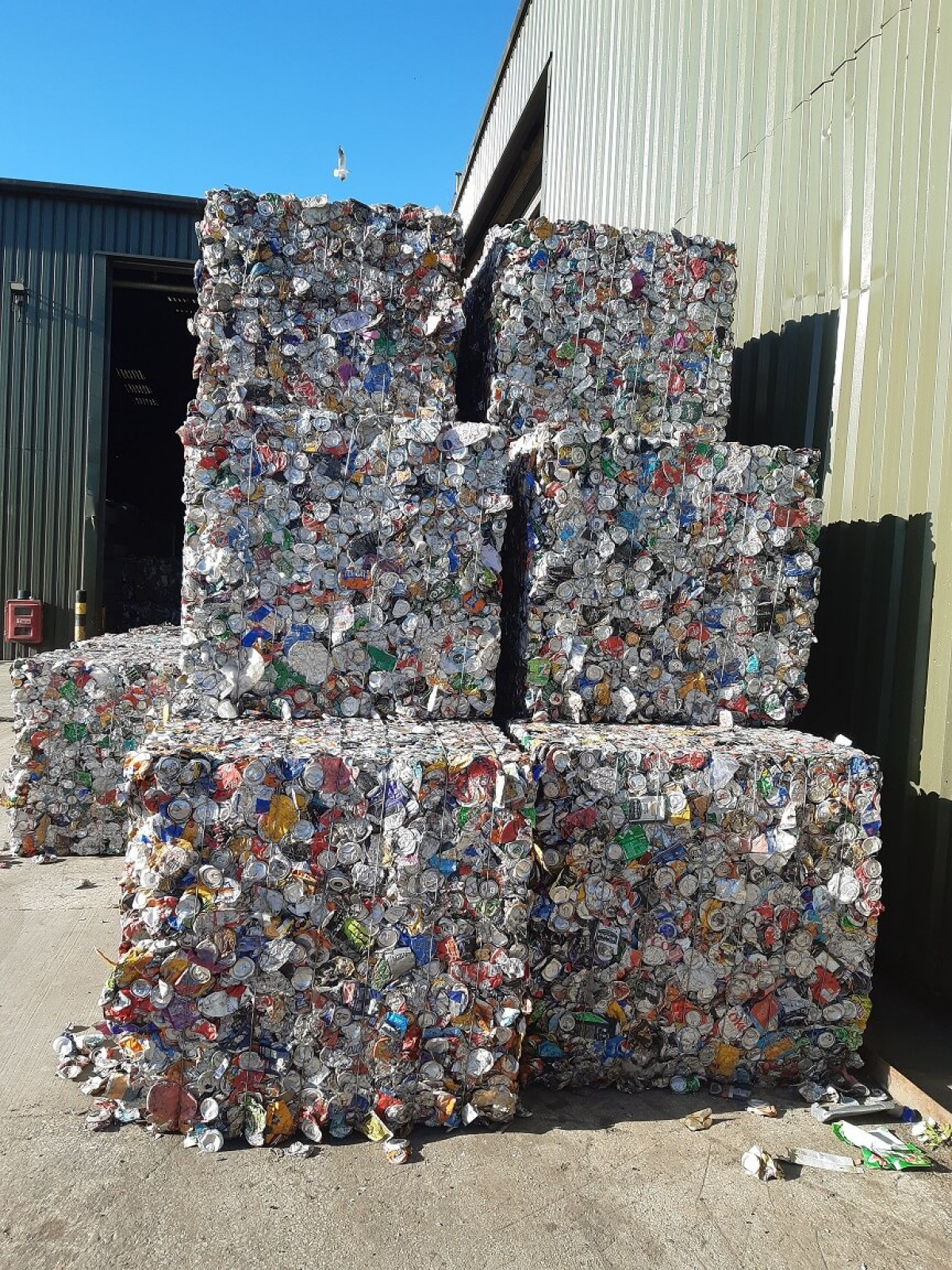
On top of this, the site also sorts and segregates plasterboard (shredded and reprocessed in Teesside), waste wood is shipped for recycling by UK Wood (based locally), and hard plastics (e.g. toys, buckets, bins) are baled and sent to a facility in the Netherlands to be sorted between different types of plastic.
Overall, Sophie and I were very impressed by the knowledge of our hosts, who clearly cared about what they did and understood what they were doing and why. Also, we were happy to see that what we expected to be being done was actually being done – always a bonus. The clear message for us is that the more we can sort out for Yorwaste (and whoever your local processor is) the better, because this improves the quality of the raw recyclate that comes out, so they can get extra cash for it.
But also, two messages also came through. Firstly, there is not enough recycling infrastructure in the UK, so the government needs to get a waste strategy in place that makes it functional and economic for processors – we need this in place now. Secondly, the plastics we use are too complex and make the sorting difficult and expensive. Somehow, it needs to be made less economic simply to make new virgin plastics than to buy reprocessed materials – once again, this needs coordinated state action internally and across Europe.
Indeed, a very recent report by Recoup that the UK needs to increase its current recycling infrastructure by five times for household-like plastic packaging and nine times for food grade plastic packaging. Furthermore, Recoup said it was important for the UK’s recycling system to resolve the “reprocessing bottleneck” by giving it the necessary priority, investment and ownership, i.e., new UK-based infrastructure.
For 2020-21, in Harrogate. total waste collected was 63,594 tonnes, of which 57,587 tonnes was domestic and 6,007 tonnes was trade waste. Of this, 24,548 tonnes of domestic waste were recycled, and 260 tonnes of trade waste, but this trade waste figure excludes waste collected by commercial waste contractors. Of the recycled product, 10,119 tonnes were garden waste for composting. So, my calculations are that overall recycling & composting was 39% for council collected waste versus an average of 44% for England; this figure for recycling levels is stubbornly at the 44 - 45% for 5-year period 2016 - 2021. For waste excluding composted waste, i.e., 53,475 tonnes of dry waste, we get 27%. I have, therefore, estimated the figure as 25 - 30% as recycled from rubbish collected, which breaks down as 30% for domestic waste and a pathetic 4% for commercial waste (for comparison, Steenbergs has three 1,100 litre bins for mixed recyclate and one 1,100 litre bin for general waste each week, which translates into a rough split of 50:50 between recycled and waste for energy, with none going to landfill). Overall, people are pretty good at recycling in our council region, whereas businesses are not good at all, but generally we are not the best region for recycling in England - that accolade goes to St Albans.
The total tonnage that goes through Harewood Whin is 132,000 tonnes, split as compost 30,000 tonnes, recyclate 32,000 tonnes and black bin bag waste 70,000 tonnes. Dry recyclate breaks down as: paper & card 34%; glass 41%; plastic 17%; metals 8%. The figures for total waste and the split for recyclate came from Yorwaste. I have assumed the metals splits on the national average of 3:1 between steel and aluminium.




